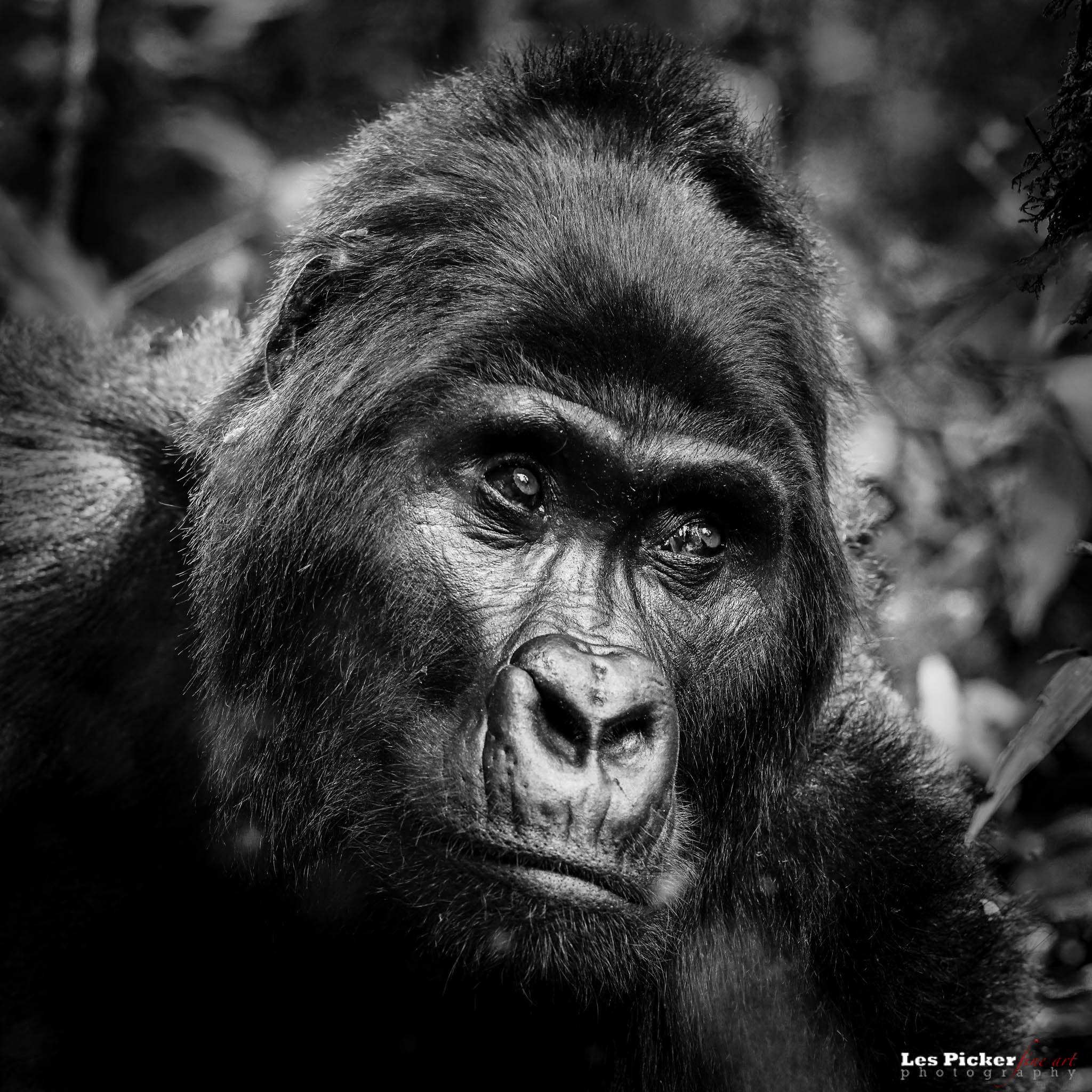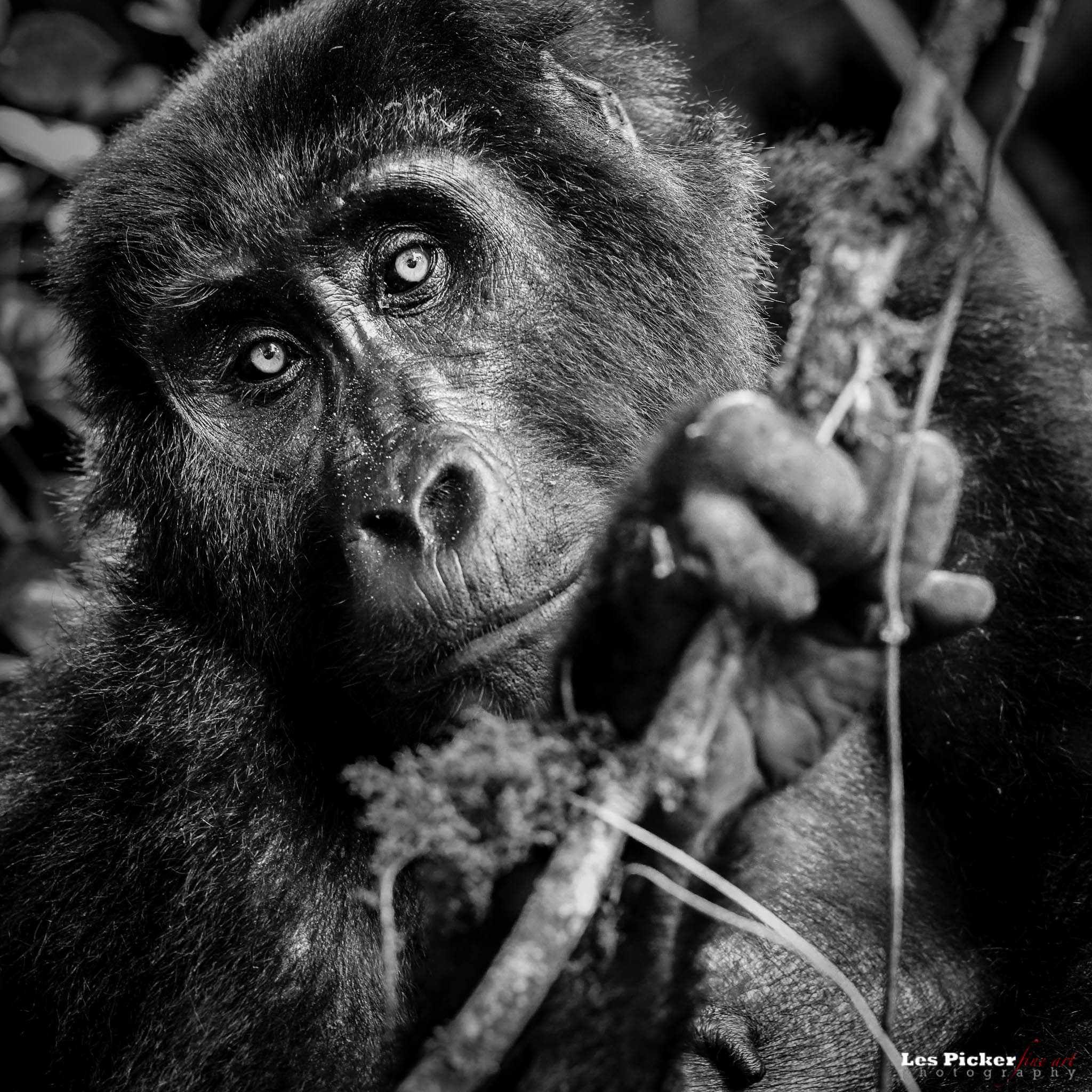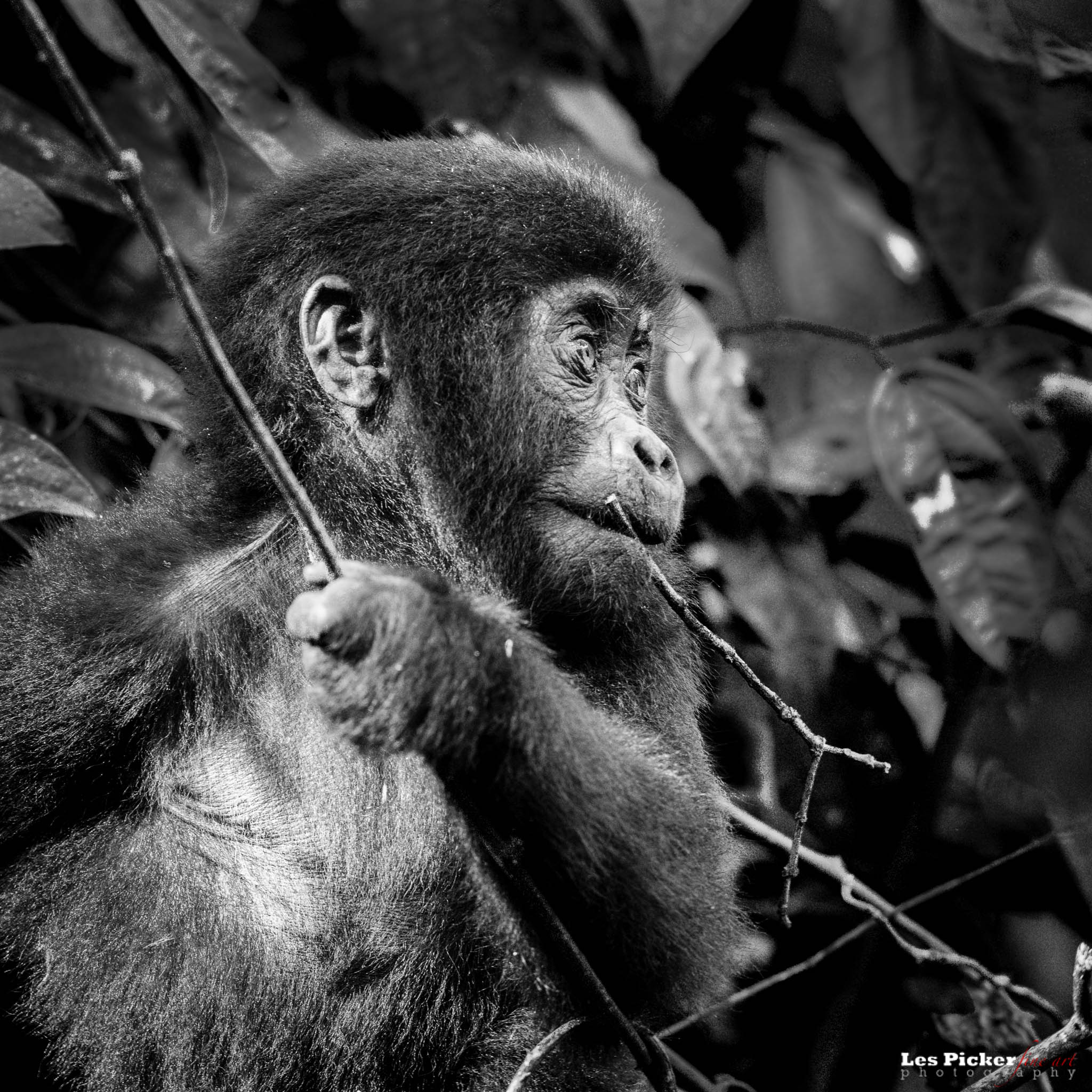
Photographing Mountain Gorillas
Gorillas
The first stop we made in leading my recent Africa Photo Adventure was in Uganda, where we stayed at Bwindi Impenetrable Forest for a chance to photograph the WOW!-inducing mountain gorillas.
While gorilla family sightings can never be guaranteed, the success rate in Bwindi is north of 95%. Rangers track the gorillas until 5:00PM the day before, which is where the troop typically will bed down. Then they pick up their observations just after sunrise and radio the location back to the tour guides to virtually guarantee sightings.
The difficulty in getting to the gorillas lies in the mountainous, heavily jungled terrain. The gorillas live in a rain forest, and the Uganda-Rwanda habitats are staggeringly lush, which makes hiking the steep slopes sometimes slippery and difficult. On our first visit to a gorilla family, we hiked steadily for about 2 grueling hours, the 7,000 foot altitude not helping. But, let’s face facts, none of my clients complained once we came face to face with the gorillas.

Watching the Babies
Visitors are only allowed to spend an hour with the gorillas, so as not to stress them. But what an hour it was! At times we were no more than an arms length from members of the troop. The immense and powerful silverback kept somewhat of a distance - at most 10-20 feet - as he calmly kept check on his extended family. The babies played, wrestled one another, chased each other up and down trees, and occasionally stopped to nurse. I don’t think anyone ever experienced an hour going by so quickly. Spending time with these sentient beings, to whom we are biologically so closely related (we share 98% of our DNA coding), is truly one of life’s natural highs.
A few quick take-aways. First, we were surprised at how nonchalant the gorillas were in our presence. It was affirming to note that if we treat wildlife with respect we can learn to coexist. Second, the impression one gets from being with gorillas is how similar we are in terms of family experience. They touch each other, they hug, they groom, they play and scold, they eat and sleep together.

Looking for Playmates
Our guides and rangers were knowledgeable, concerned with our safety, and helpful, making the experience that much more enjoyable.
A Few Tips
If you plan to do a mountain gorilla trek, here are some tips to help you develop a photography plan.
Don’t forget accessories. Aside from the basics, like hat, insect repellent, sunscreen and the like, take a lens cloth as under certain circumstances the sun can cause the humidity in the air to condense on your lens. Bring more storage cards and batteries than you think you will need. Tripods will not work under these conditions, but a monopod may help.
Hire a Porter. Trained porters are readily available for all Bwindi gorilla treks. Be wise and hire one. The $15 USD cost is well worth it if your trek that day is straight up the mountain.
Lens Choices. You will hear a lot about this. I saw one man - undoubtedly a Boy Scout when he was younger - with 5-6 lenses in his backpack, including long teles. That is overkill, and here’s why. You will be so close to the gorillas that a huge telephoto is entirely unnecessary, even if you want close-up images. All my images were shot with a Nikkor 70-200 2.8 lens on my D850. I could have used my 24-70, which I had with me, but I did not bring a spare camera body with me and I did not want to change lenses in the midst of the shoot.
Be Patient & Civil. The Bwindi guidelines call for eight people in each visitor group. The jungle is lush with plants, making unobstructed views difficult. Be patient, as the gorillas will move around if they are not napping. A good viewing experience also depends on civility, so allow others to have their turn if you are occupying a great vantage point. The guides will do their best to get you within literally a few feet from these magnificent creatures.
Practice Before Arriving. Jungle conditions present nightmare contrast issues. One part of the gorilla may be in deep shade, while another part is in bright sun. Of course the best response to this is to have a camera with as wide a dynamic range as possible. But whether or not you have a budget camera or a pro version, you need to practice before leaving home so that you are quickly able to make adjustments based on lighting conditions.
Know The Mechanics. You’ll most likely want to use autofocus to lock onto the gorillas' movements. Spot focus should work well, with the emphasis on the eyes. A fast shutter speed also helps, so you may have to boost your ISO to achieve that. Most prosumer cameras today tolerate high ISOs with little or no problem. Another tip is to use a fairly shallow depth of field, perhaps f4 or 5.6. That will help you to get a faster shutter speed and will isolate an individual animal from the clutter of the jungle behind it.
Have a Mental Shot List. Seeing the animals is such a thrill, you may just start shooting anything and everything. It’s better to do some Internet research and come up with a series of images that you would like to bring home. Everyone knows what a gorilla looks like, so full body shots may not be the prize shot to bring home. In my case, since I primarily shoot in B&W nowadays, I was looking for images that showed the sentience on the faces of these beautiful animals.

Contemplation
It’s Not All About Images. Whatever you do, please take time to fully breathe in the wonder of the experience. You will be sharing an intimate hour with creatures that have been feared, mythologized, killed for sport and body parts, and driven from their natural ranges. Watch them passively eating leaves, hugging their young, feeding their babies, vocalizing, touching. Marvel at how they have adapted to human visitors who appreciate them now for their ecological role.
Contribute. Gorillas are endangered. In the nearby Congo, which we could see from where we stayed, they are still poached. Consider a donation to one of the several NGOs whose mission is to protect these noble animals.